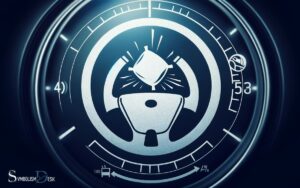Car With Key Symbol on Dashboard Hyundai: Explanations!
The car with a key symbol on a Hyundai dashboard is an indicator of the car’s immobilizer system being activated.
It usually signifies that the vehicle’s security system doesn’t recognize the key or there’s an issue with the system’s components.
Addressing this promptly can prevent potential starting problems or security vulnerabilities. The key symbol on a Hyundai dashboard is directly tied to the car’s anti-theft system.
When this light is illuminated, it can indicate:
- The key is not being recognized due to a faulty chip or dead battery in the key fob.
- There’s a malfunction within the immobilizer system itself.
- There’s a communication problem between the key and the vehicle’s electronic control unit (ECU).
To diagnose the issue, consider the following steps:
- Check the key fob battery and replace it if necessary.
- Ensure you are using the correct key if you have multiple keys.
- Try resetting the system by locking and unlocking the doors.
- Consult the vehicle’s manual for specific troubleshooting related to the key symbol.
- Seek professional assistance if the problem persists.
Quickly addressing the key symbol on your Hyundai dashboard can prevent start-up delays and maintain your car’s security system integrity.
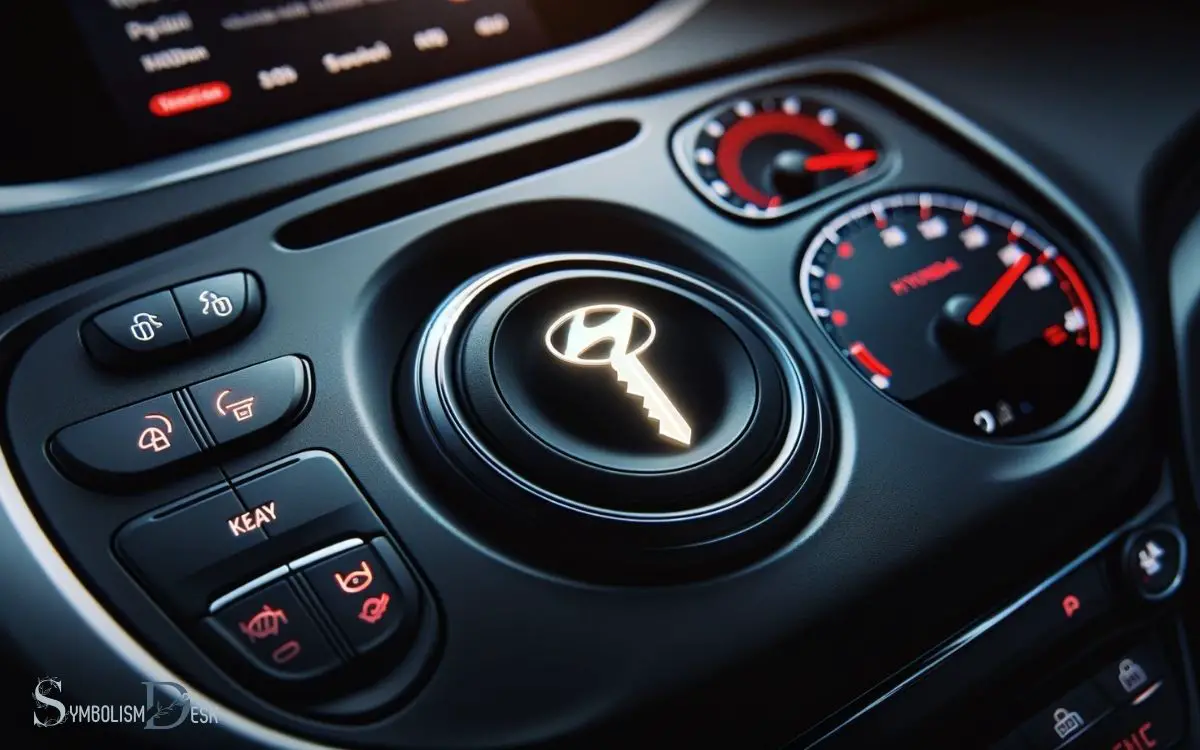
Key Takeaway
Troubleshooting Key Symbol on Hyundai Dashboard
| Possible Cause | Solution | Notes |
|---|---|---|
| Faulty key fob battery | Replace the battery | If the key fob’s battery is dead, the car won’t recognize the key. |
| Incorrect key | Use the correct key | Ensure you’re using the key intended for the vehicle. |
| Immobilizer system malfunction | Reset the system or consult a professional | A reset can sometimes resolve minor electronic issues. |
| Communication issue with ECU | Seek professional diagnosis and repair | This may require specialized equipment to diagnose and fix. |
Understanding the Key Symbol
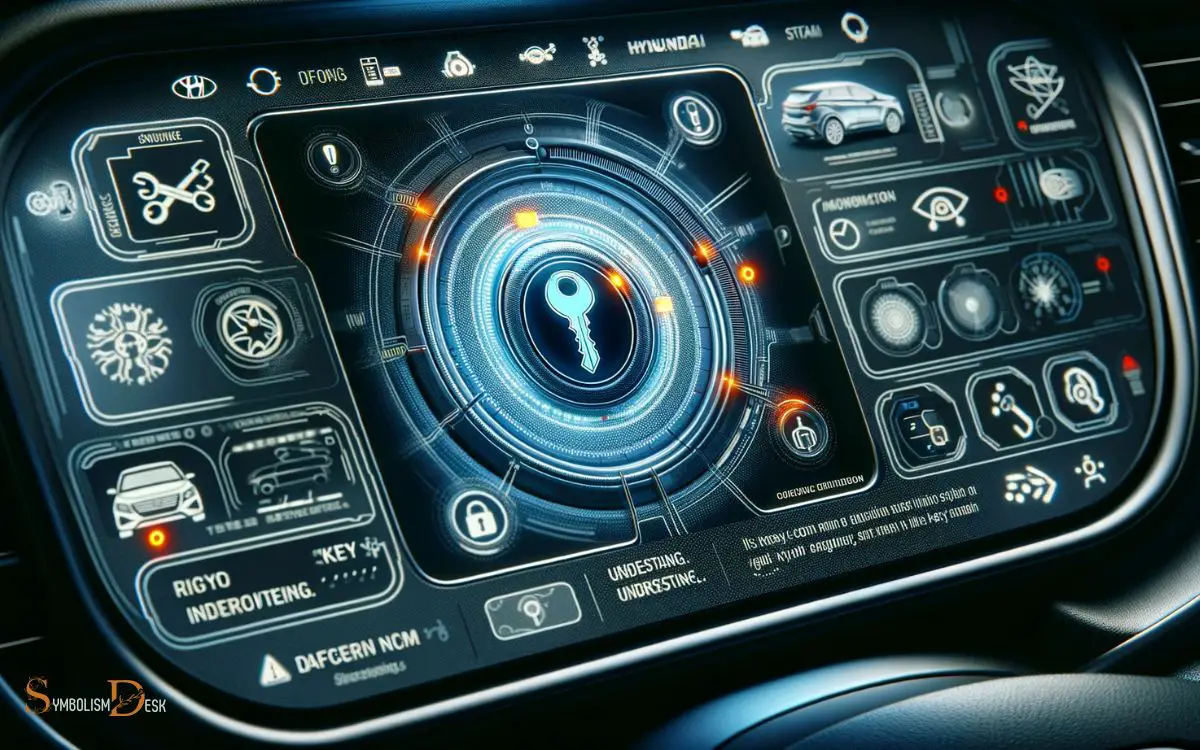
You can understand the key symbol on the dashboard of a Hyundai by recognizing its specific meaning and taking appropriate action. The key symbol typically indicates an issue with the vehicle’s immobilizer system.
This system is designed to prevent unauthorized use of the car, and when the key symbol appears, it may mean that the system has detected a problem. To address this, the driver should first try using the spare key, as the issue could be related to the key itself.
If the symbol persists, it is advisable to have the vehicle inspected by a qualified technician to diagnose and resolve the problem. Understanding the key symbol is crucial for ensuring the proper functioning of the vehicle’s security system.
Possible Causes of the Key Symbol
The key symbol on the dashboard of a Hyundai can indicate various potential issues. Low battery voltage, a malfunction in the immobilizer system, or problems with the key fob are common culprits.
Each of these points will be explored in the following sections to help drivers diagnose and address the key symbol on their Hyundai’s dashboard.
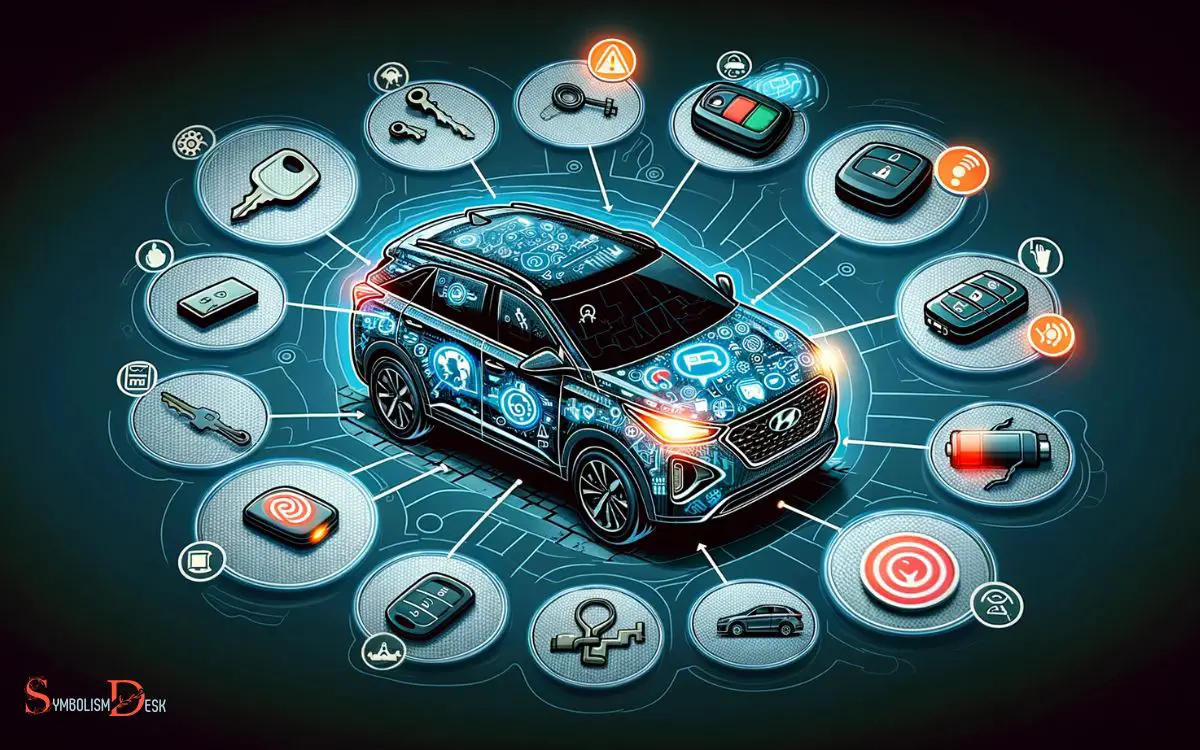
Low Battery Voltage
Experiencing a car with the key symbol on the dashboard in a Hyundai may indicate low battery voltage, requiring prompt attention to avoid potential starting issues.
Low battery voltage can be caused by various factors such as leaving lights or other electronic devices on when the engine is not running, a faulty alternator, or an aging battery.
Additionally, extreme weather conditions, such as very hot or cold temperatures, can also affect battery performance.
It’s important to address low battery voltage promptly, as it can lead to difficulties starting the car or even complete failure to start.
Regular maintenance checks and keeping an eye on the battery’s age and condition can help prevent potential issues related to low battery voltage and ensure the overall health of the vehicle.
Immobilizer System Malfunction
When facing the key symbol on the dashboard of a Hyundai, the appearance of an immobilizer system malfunction could be linked to various causes, including issues with the key fob or a disrupted signal transmission.
A malfunctioning key fob, due to a dead battery or damaged circuit, may fail to transmit the correct code to the car’s immobilizer system, triggering the key symbol on the dashboard.
Additionally, disruptions in the signal transmission between the key fob and the car’s receiver unit, such as interference from other electronic devices, can also lead to the immobilizer system malfunction.
In some cases, a faulty immobilizer system itself could be the root cause of the issue. Seeking professional assistance to diagnose and resolve the specific cause of the immobilizer system malfunction is advisable.
Key Fob Issues
Possible causes of the key symbol on the dashboard of a Hyundai may be related to issues with the key fob, such as a dead battery or disrupted signal transmission.
A dead or low battery in the key fob can prevent it from sending the signal needed to start the car, triggering the key symbol on the dashboard. This can leave drivers stranded or unable to access their vehicles if they don’t have a spare key fob or battery on hand. Addressing dead key fob battery issues promptly by replacing the battery or carrying a backup can help prevent inconvenience. Additionally, some vehicles offer manual key access or secondary methods to start the car, which can be a temporary solution in such situations.
Additionally, interference from other electronic devices or a damaged key fob can disrupt the signal transmission, causing the car to not recognize the key. In some cases, reprogramming the key fob or replacing its battery can resolve these issues.
If problems persist, it may be necessary to have the key fob inspected by a professional to determine if it needs to be repaired or replaced.
Effects on Vehicle Operation
The presence of a key symbol on the dashboard of a Hyundai can have various effects on the vehicle’s operation. Understanding the keyless entry system is crucial in comprehending how the symbol may impact engine start and overall security features.
By exploring these points, drivers can gain insight into the potential consequences of the symbol’s appearance.
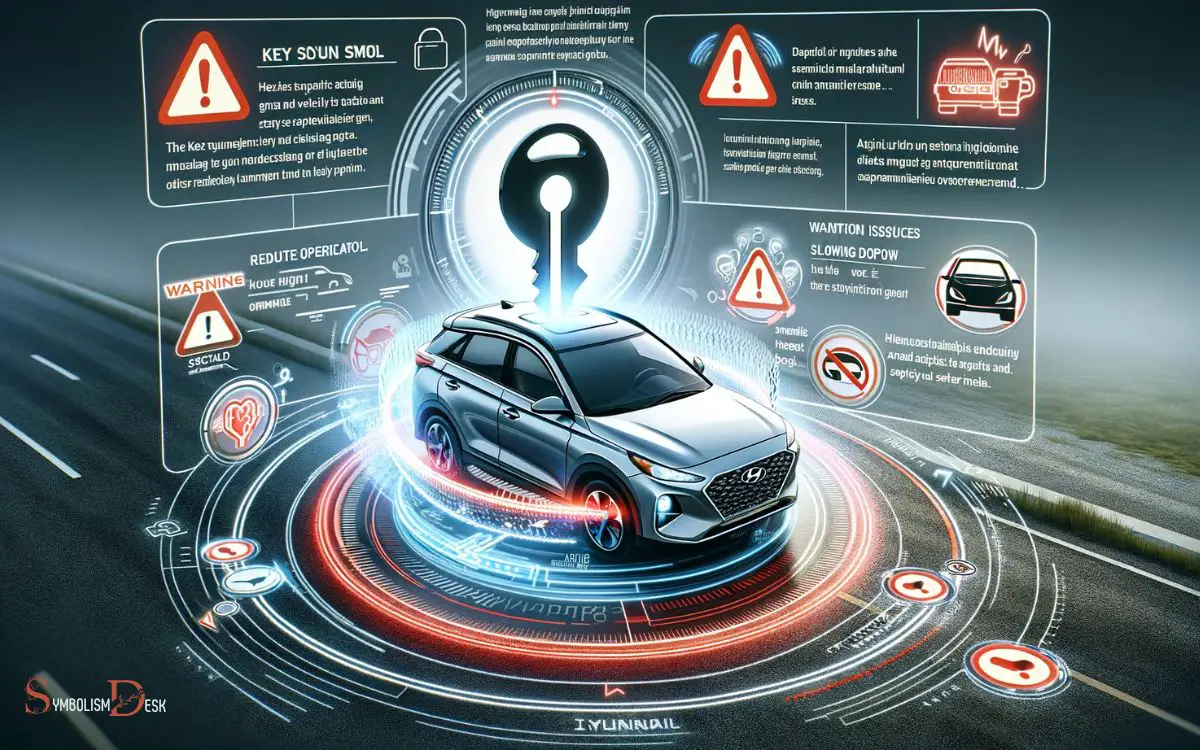
Keyless Entry System Explained
The keyless entry system has revolutionized vehicle operation, allowing drivers to start their cars with just the push of a button.
This advanced technology has several effects on vehicle operation, including:
- Convenient and hassle-free access to the vehicle
- Enhanced security features, reducing the risk of car theft
- Seamless integration with other vehicle systems, such as automatic locking and unlocking
- Improved safety through features like emergency stop functions
- Customizable settings for individual driver preferences
The keyless entry system not only provides convenience but also enhances the overall driving experience, offering peace of mind and a sense of control.
As drivers adapt to this modern technology, it becomes an integral part of their daily routines, making traditional key-based systems seem outdated.
Impact on Engine Start
An owner of a Hyundai vehicle may notice that when the key symbol is displayed on the dashboard, it indicates that the engine can be started using the keyless entry system.
This symbol typically signifies that the vehicle’s engine can be started without physically inserting a key into the ignition. When the key symbol appears, the driver can start the engine by simply pressing the engine start/stop button while applying the brake pedal.
This not only provides convenience but also enhances the overall vehicle operation by offering a seamless and modern approach to starting the engine.
The keyless entry system and engine start feature contribute to a more user-friendly and efficient driving experience for Hyundai owners.
Security Features Overview
When the key symbol is displayed on the dashboard of a Hyundai vehicle, it signifies that the engine can be started using the keyless entry system, impacting the vehicle’s security features and overall operation.
The key symbol indicates the presence of advanced security features that prevent unauthorized access and theft.
These security features not only provide peace of mind but also contribute to a sense of safety and protection for both the driver and passengers. The seamless integration of the keyless entry system enhances convenience, offering a modern and sophisticated approach to vehicle security.
This advanced technology fosters a feeling of trust and reliability in the vehicle’s ability to safeguard against potential security risks.
Diagnostic Steps for the Key Symbol
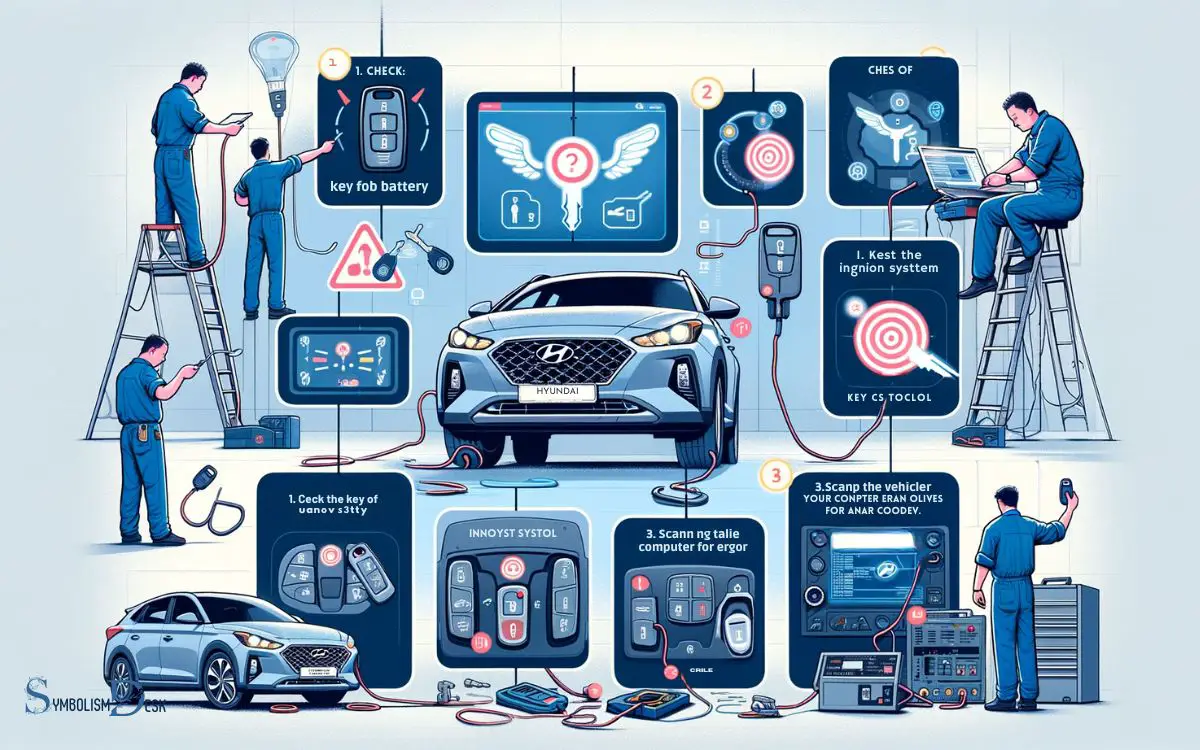
One possible diagnostic step for the key symbol on the Hyundai dashboard is to check the battery in the key fob. A low or dead battery in the key fob can cause communication issues with the car, triggering the key symbol to appear on the dashboard.
Replacing the battery is a simple and inexpensive fix that can resolve this issue. If the key fob battery is not the problem, the next step is to ensure that the key fob is in proper working condition.
This can be done by trying a spare key fob, if available, to see if the issue persists. If the problem persists even with a different key fob, it may indicate a more complex issue that requires further diagnosis by a qualified technician.
Resolving the Key Symbol Issue
If the key symbol persists on the dashboard, owners should schedule a diagnostic check with a qualified technician to identify and address the underlying issue. Resolving the key symbol issue is crucial for the proper functioning of the vehicle.
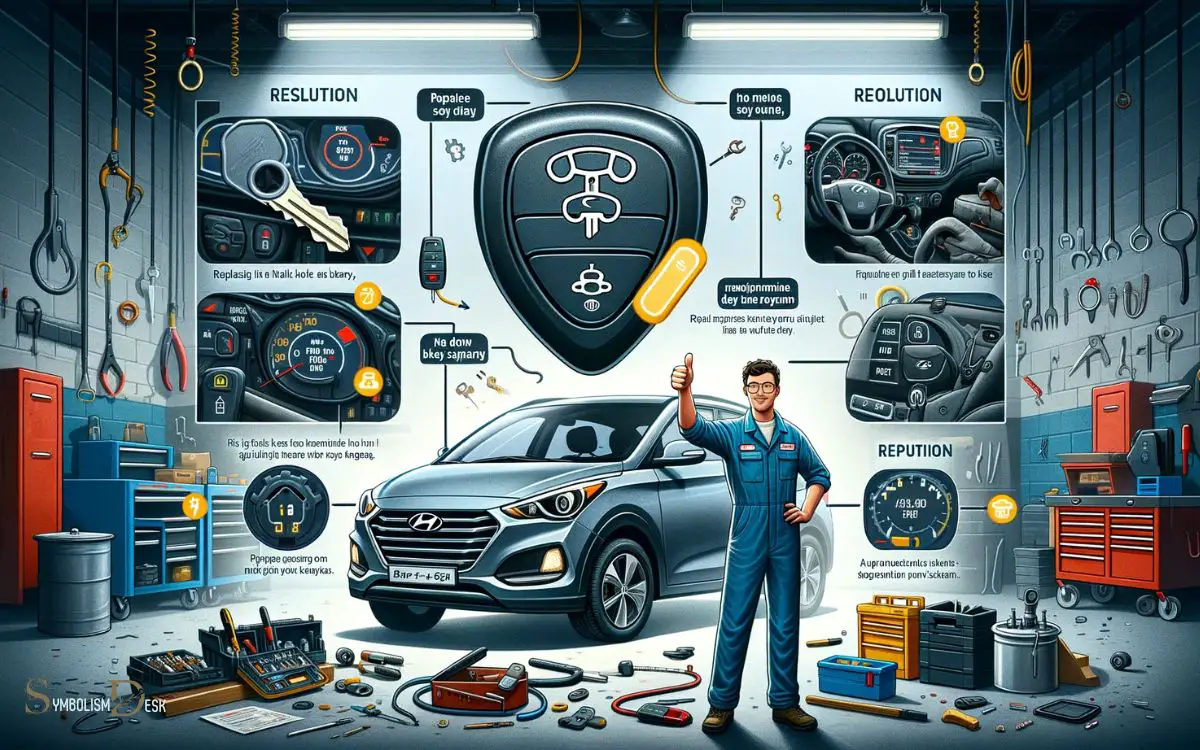
Here are some steps that can help address the problem and ensure peace of mind for the car owner:
- Stay calm and avoid panicking.
- Communicate openly and effectively with the technician.
- Trust the expertise of the technician to diagnose and fix the issue.
- Stay informed about the progress of the diagnostic process.
- Take proactive steps to prevent similar issues in the future.
Preventative Measures for Key Symbol
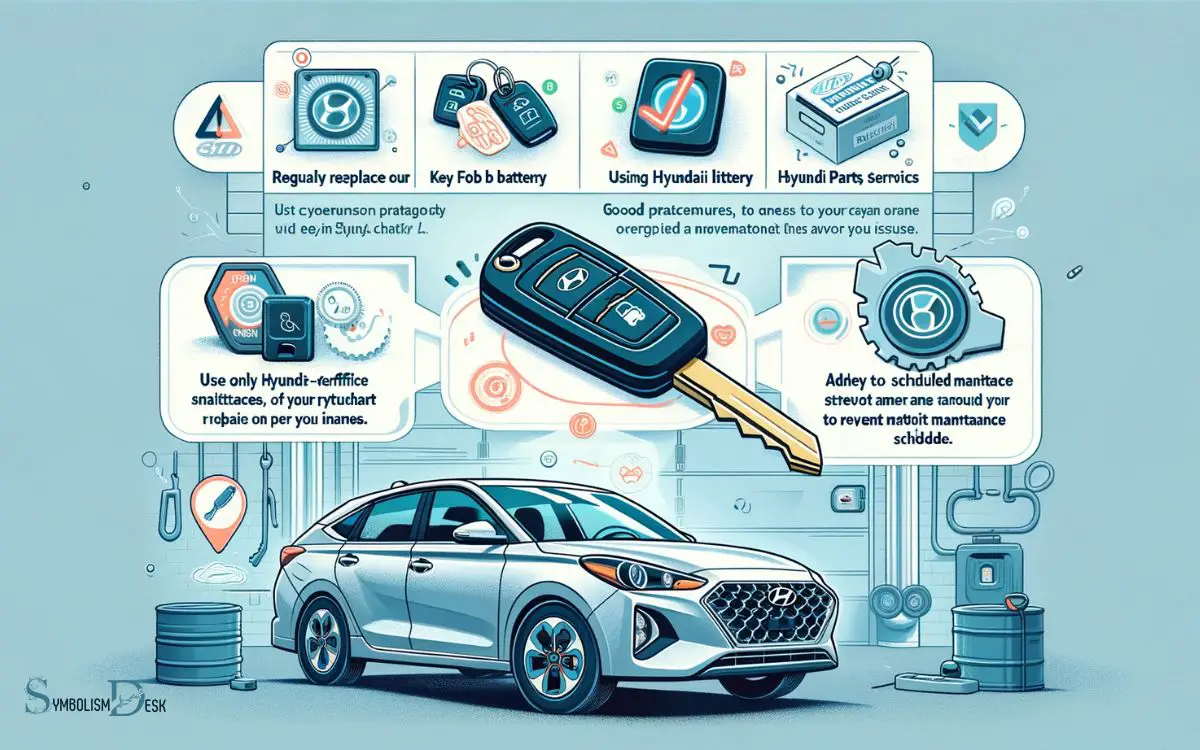
To prevent the key symbol from appearing on the dashboard, car owners should regularly maintain their vehicle’s ignition system.
This includes ensuring that the key fob’s battery is replaced as needed and keeping the ignition switch and key cylinder clean and free of debris. Additionally, using the correct key for the vehicle is essential to prevent the key symbol issue.
Regularly checking and replacing worn-out keys can help avoid potential problems. It’s also important to avoid excessive weight on the keychain, as this can put strain on the ignition system.
By taking these preventative measures, car owners can reduce the likelihood of the key symbol appearing on the dashboard and ensure the smooth functioning of their vehicle’s ignition system.
Professional Assistance and Resources
When preventative measures prove insufficient, car owners can seek professional assistance and utilize available resources to address the key symbol issue on their Hyundai’s dashboard.

Here are some options to consider:
- Contact a certified Hyundai dealership for specialized assistance.
- Utilize online forums and communities to seek advice from experienced car owners.
- Consider hiring a professional automotive locksmith for key-related issues.
- Utilize online resources such as instructional videos and troubleshooting guides.
- Join local car clubs or meetups to seek advice and recommendations from fellow Hyundai owners.
Hyundai Car Dashboard Symbols and Meanings
Hyundai, like many other car manufacturers, uses a variety of dashboard symbols and warning lights to communicate important information to the driver about the status and condition of the vehicle.
It’s essential to familiarize yourself with these symbols and their meanings to ensure safe and proper operation of your Hyundai vehicle. Keep in mind that the symbols and their meanings can vary slightly depending on the specific model and year of your Hyundai.
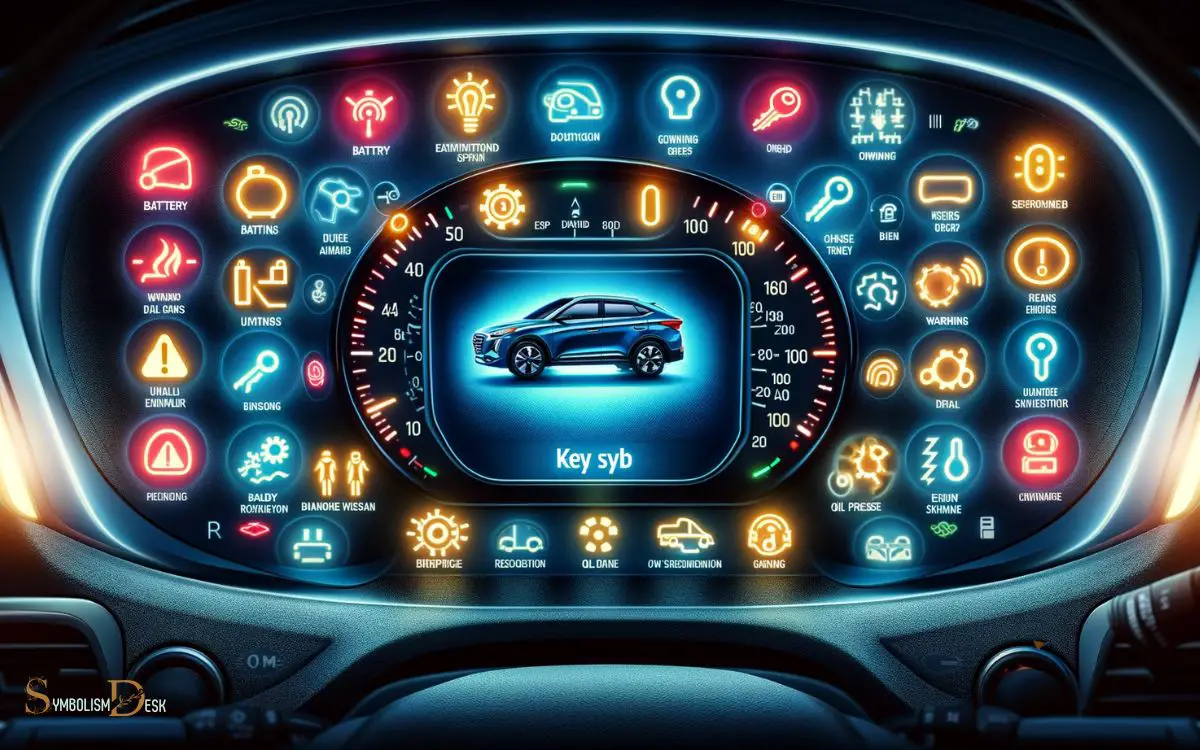
Here are some common Hyundai dashboard symbols and their meanings:
- Check Engine Light: This warning light typically looks like an engine outline or says “Check Engine.” It indicates a problem with the engine or emission control system. It’s essential to have your vehicle’s engine checked by a qualified technician when this light is illuminated.
- Battery Warning Light: This symbol usually looks like a battery or includes the word “ALT” (alternator). It indicates a problem with the charging system, such as a faulty alternator or battery.
- Oil Pressure Warning Light: This symbol resembles an oil can or an oil lamp. It illuminates when there’s low oil pressure in the engine. Low oil pressure can lead to engine damage, so you should stop driving and check the oil level immediately if this light comes on.
- Brake Warning Light: This light typically looks like an exclamation point inside a circle, often accompanied by the word “BRAKE.” It indicates a problem with the brake system, such as low brake fluid or a malfunction in the braking components.
- ABS (Anti-lock Braking System) Warning Light: This symbol usually looks like “ABS” inside a circle. It signifies a problem with the ABS system. While the regular braking system still works, you should have the ABS system checked.
- Airbag Warning Light: This symbol typically looks like an airbag deploying in front of a seated passenger. It indicates a problem with the airbag system. A malfunctioning airbag may not deploy in an accident, so it’s essential to have it inspected.
- Tire Pressure Monitoring System (TPMS) Warning Light: This symbol usually looks like a tire with an exclamation point inside it. It alerts you to low tire pressure in one or more tires. Check and adjust the tire pressures as needed.
- Traction Control System (TCS) or Stability Control System (ESC) Warning Light: These symbols may look like a car with wavy lines underneath or include the letters “TCS” or “ESC.” They indicate a problem with the vehicle’s traction or stability control system.
- Low Fuel Warning Light: This symbol looks like a fuel pump or a gas tank. It illuminates when your fuel level is low, reminding you to refuel soon.
- Washer Fluid Warning Light: This symbol usually looks like a windshield or a wiper. It indicates that your windshield washer fluid level is low and needs to be refilled.
These are some of the common dashboard symbols you may encounter in a Hyundai vehicle. It’s crucial to refer to your vehicle’s owner’s manual for specific information on the symbols and their meanings for your particular model and year.
Additionally, if any warning light stays illuminated while driving, it’s a good practice to have your vehicle inspected by a Hyundai service technician to diagnose and resolve any potential issues.
Conclusion
Dealing with a car with a key symbol on the dashboard can be frustrating, but understanding the possible causes and taking preventative measures can help prevent future issues.
Interestingly, statistics show that nearly 20% of car owners have experienced the key symbol warning light at some point, highlighting the importance of understanding and addressing this common issue.




